Early Childhood Education and Care students presented their Creative Reflexive Practitioner Displays this week, which are models to show their journey and significant moments in their lives so far.
Each display was vastly different to the next, highlighting how no two journeys are the same. The students created their models using doll houses, trees, tents, shelves and other creative ways to represent their past, present, and futures.
Highs, lows, challenges, jobs, academia, people, and places were represented to signify all of the factors that have had an impact on the students, their studies and work.
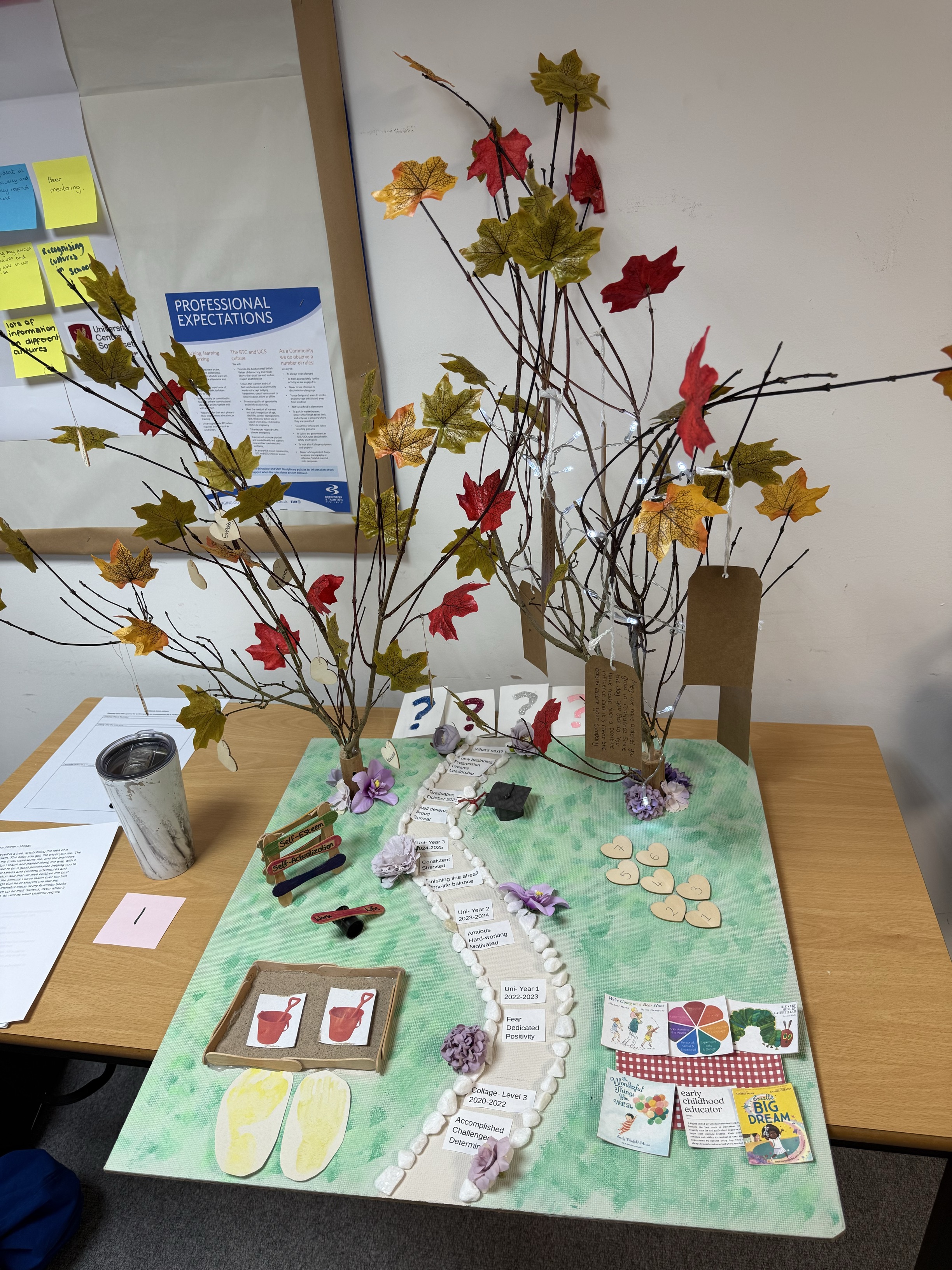
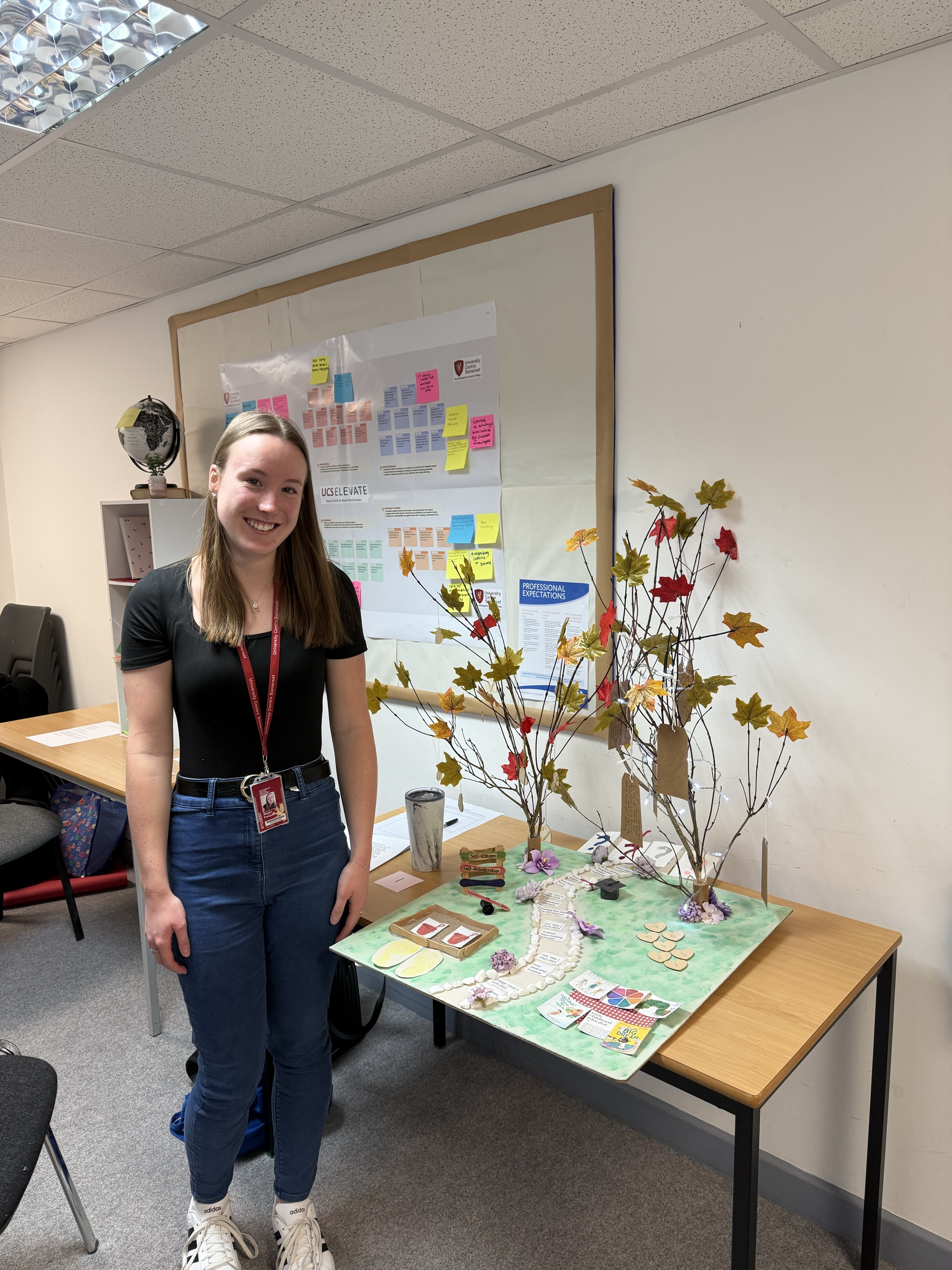
Megan’s display features a tree to symbolise growth. ‘The trunk represents me; the branches represent the new knowledge I learnt and gained along the way and the path represents the journey I have taken over the last five years.’ Megan’s model included her favourite books, characteristics that help make a good early years practitioner and quotes from her colleagues that have motivated her.
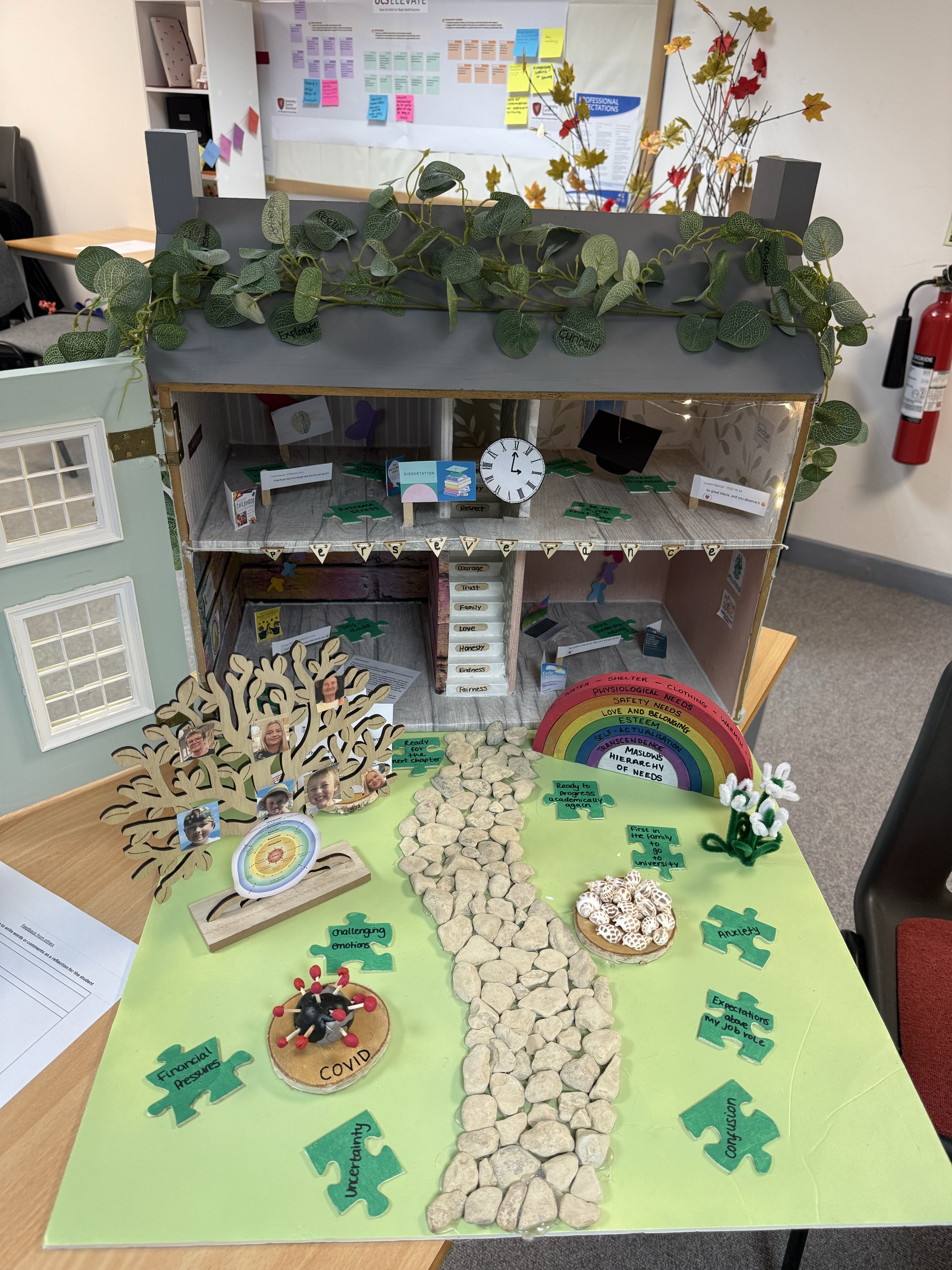
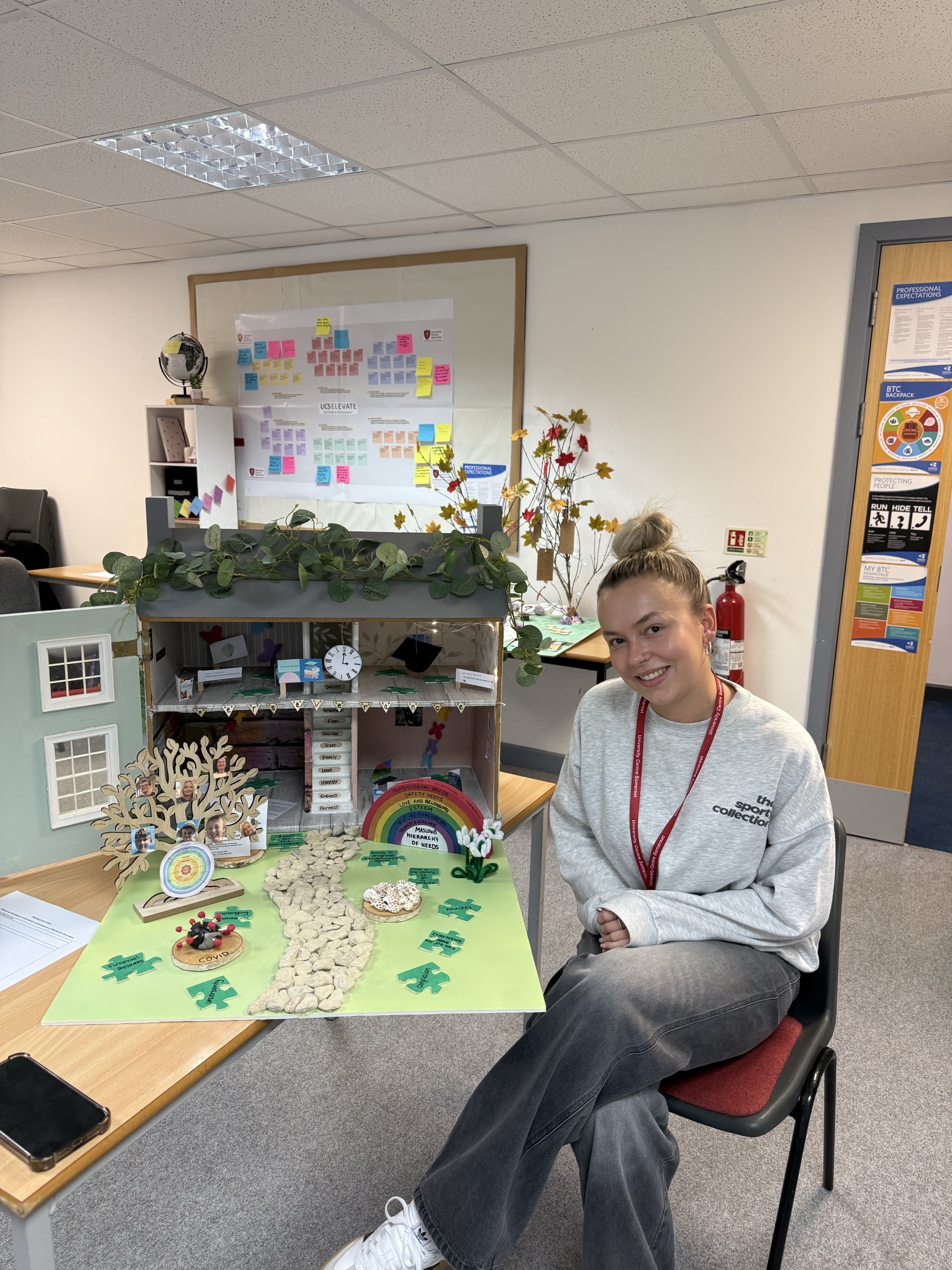
Macie used a doll house to represent her journey and show her university experience. ‘Each room represents a chapter of personal growth, it explores identity, resilience, and change.’ Her model includes a family tree, the impact of covid, steps to success and even the email she received from Course Leader, Louise Hannan, when she was accepted to UCS.
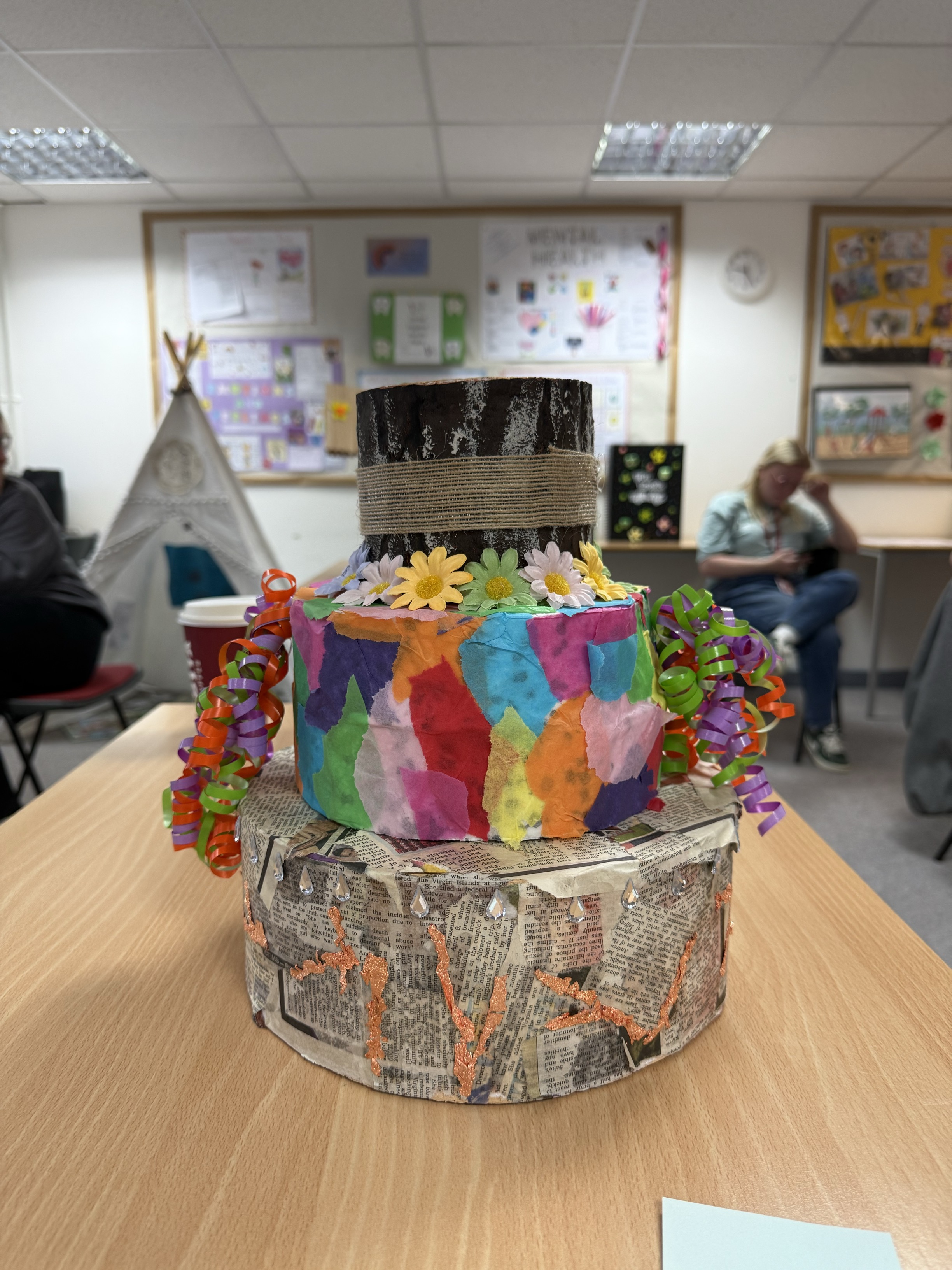
Evie constructed a three-tiered cake to represent the last three years of her university journey. Evie mentioned how every cake requires certain ingredients and hers is no exception. Her most used theorists represent the flour (Vygotsky’s Sociocultural Theory), the butter (Skinner’s Social Learning Theory) and so forth. The outside of the cake shows her experiences. ‘First year was full of information, therefore covered in newspaper. Second year is covered in mess to represent the messy year I had, and the third tier is decorated as a tree trunk to show I am continuing to grown and learn.’

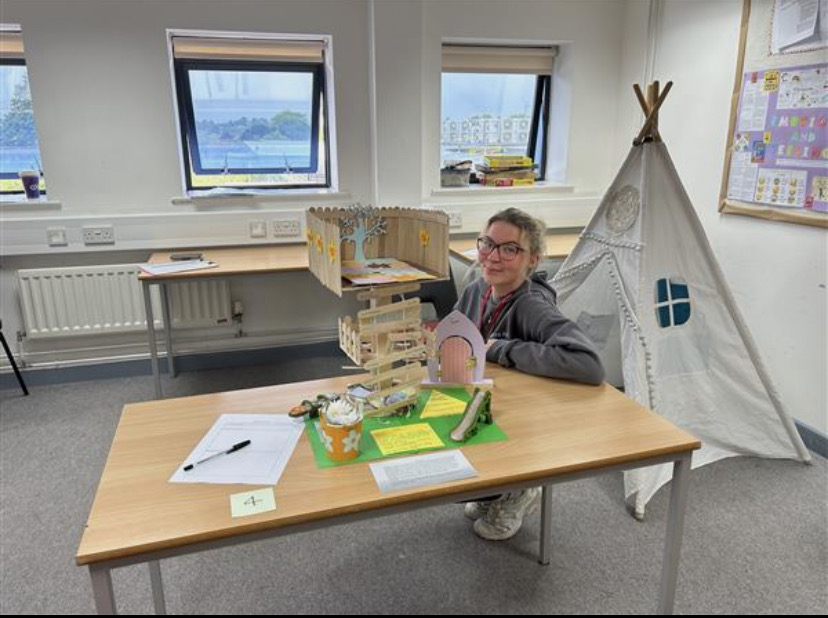
Chloe’s display is a tree-house to symbolise childhood. ‘There are representations of my experiences in the tree-house which also relate to learning and development of children, including Maslow’s hierarchy of needs and play and its advantages for a child’s development.’ Chloe’s tree-house shows traits that are necessary to work with children, a family tree and puzzle pieces with one piece missing (graduation) to show what’s to come.
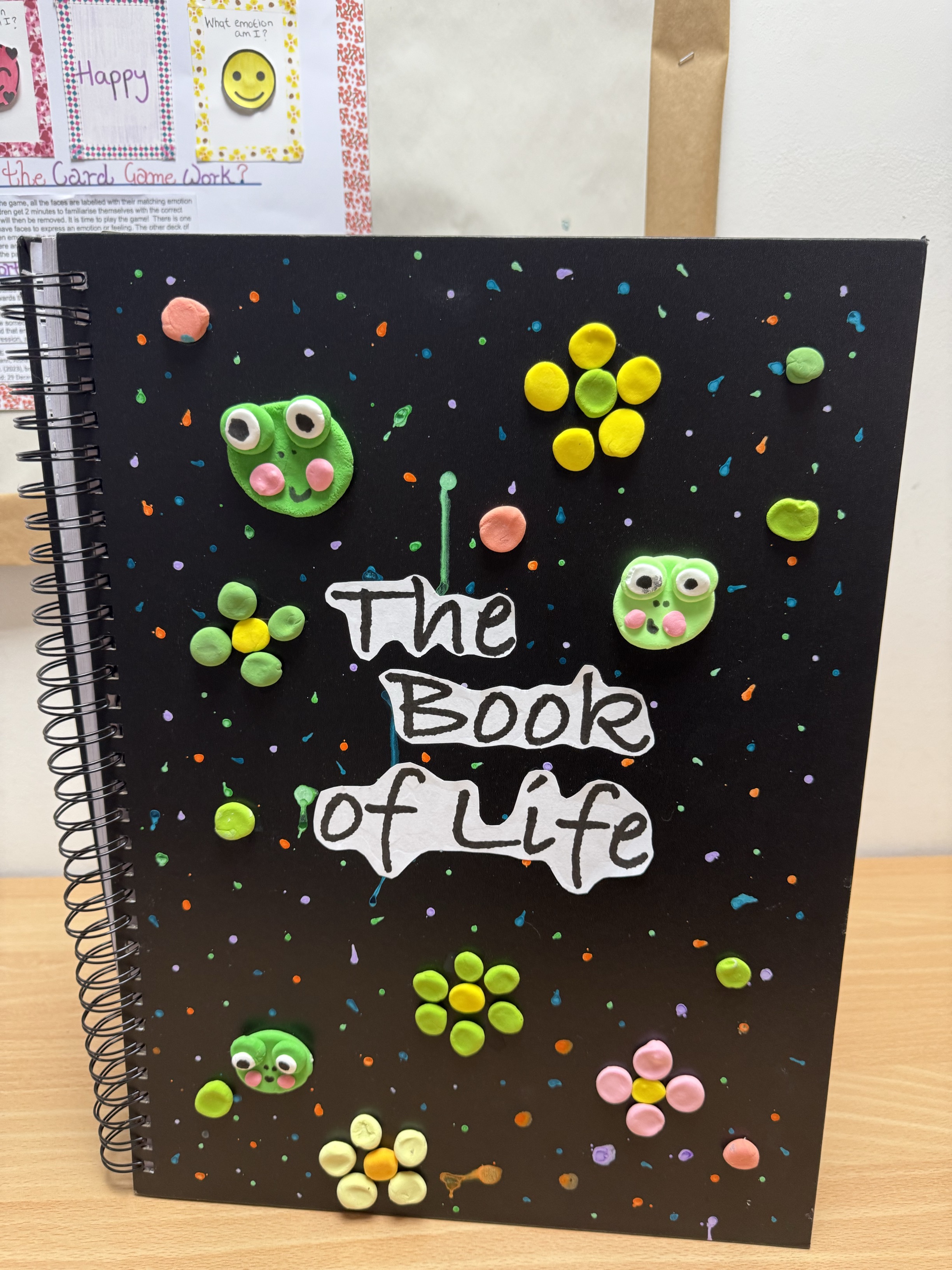
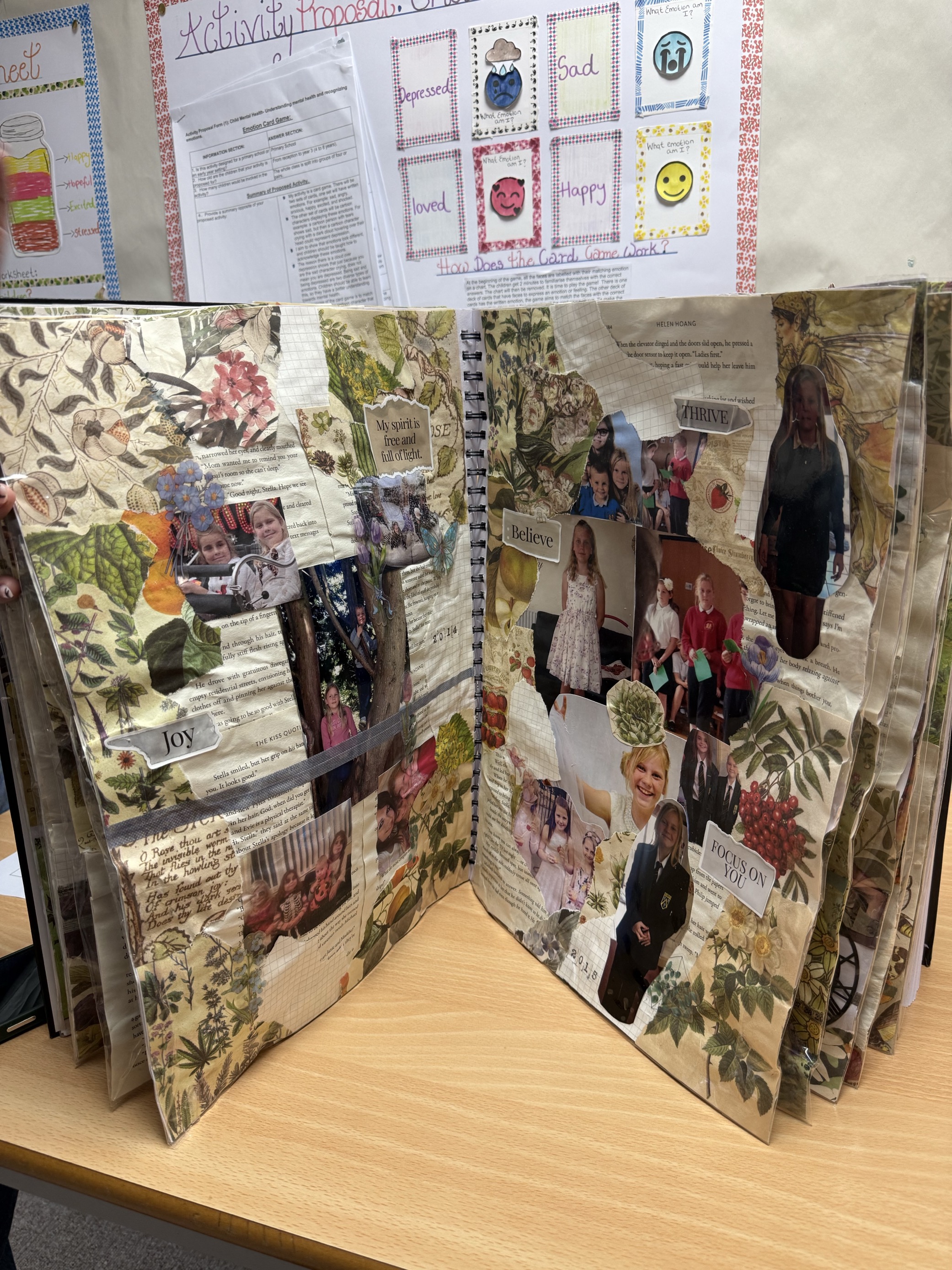
Keira’s book of life includes pages featuring parts of her life from a baby up until now. The pages at the back of the book are deliberately left blank to symbolise the ‘unfinished and involving nature of life’. The book follows a theme of green tone and frogs to show Keira’s connection to nature. ‘The book of life is not just a reflection on the past but an open-ended invitation for growth connection and continuous self-discovery.’
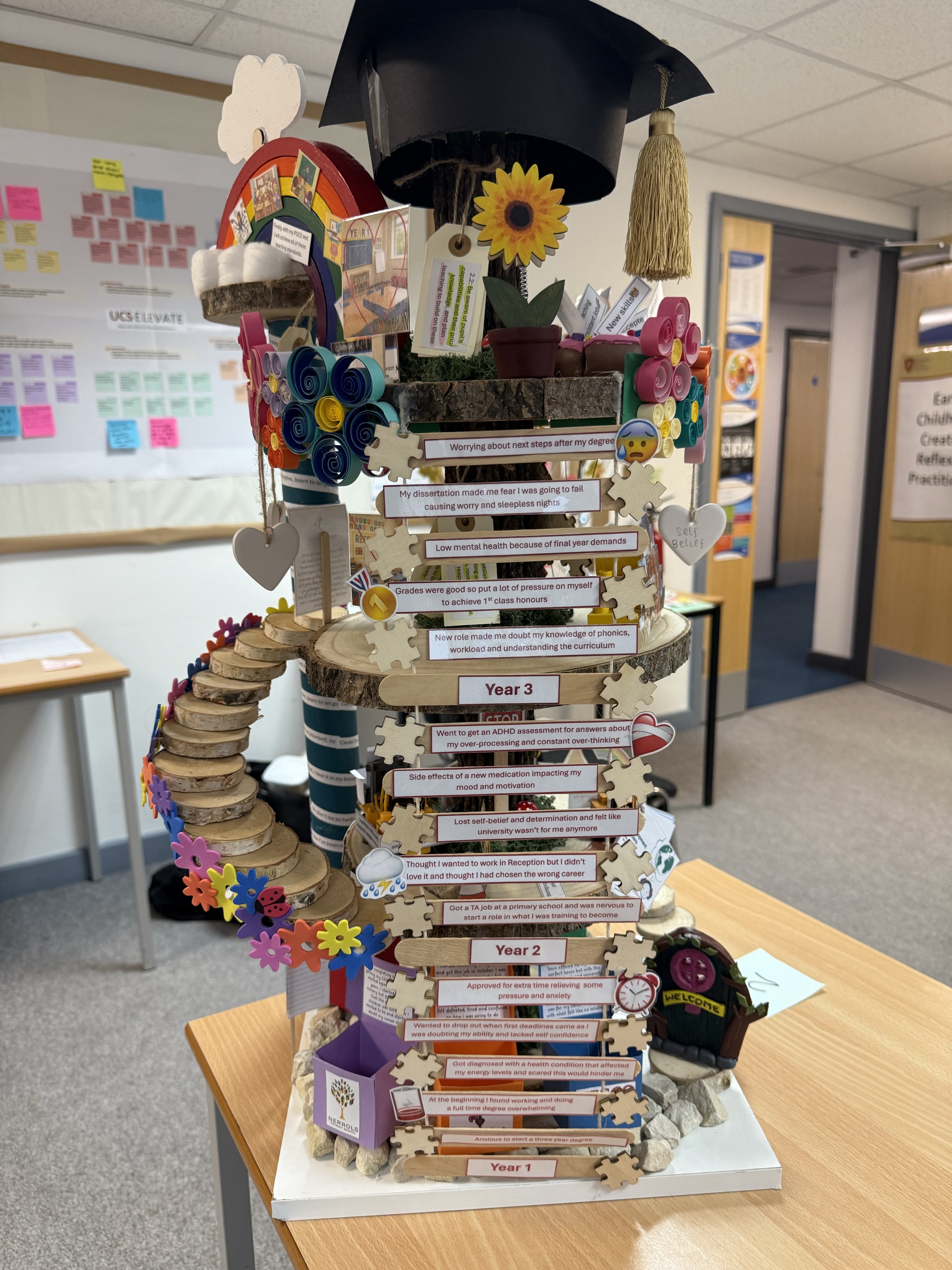
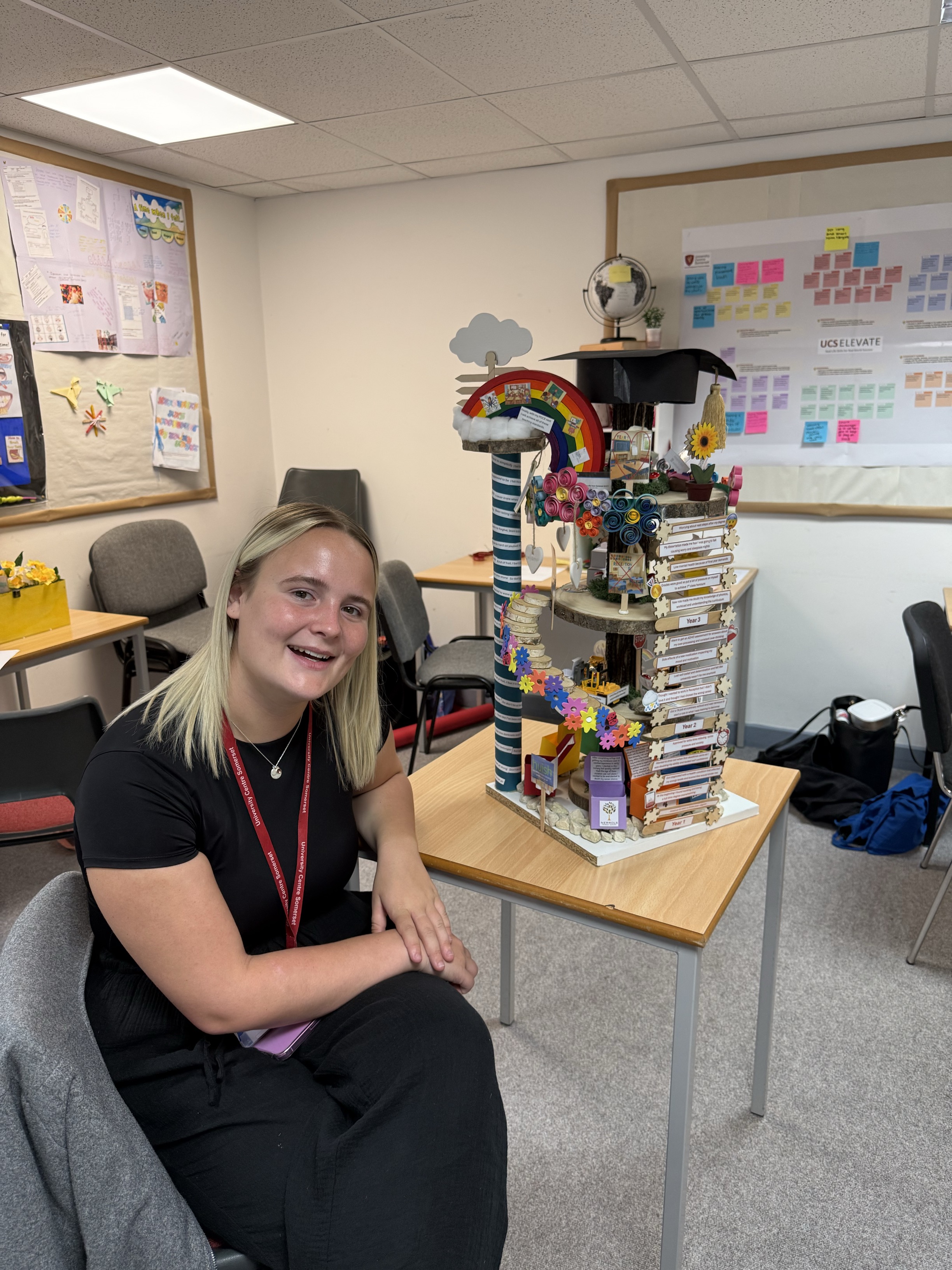
Lauren’s tree has three levels, for each year at university. The first year, being a construction site, is messy and hard to navigate. But moving into second and third year begins to flower to show the growth in her academic journey. Lauren’s model also features a ladder of all the challenges she has faced on this journey but makes its way to the top level which shows a big graduation cap to show her success with her degree and a rainbow which features her acceptance letter for her PGCE, the next step to become a Primary School Teacher.

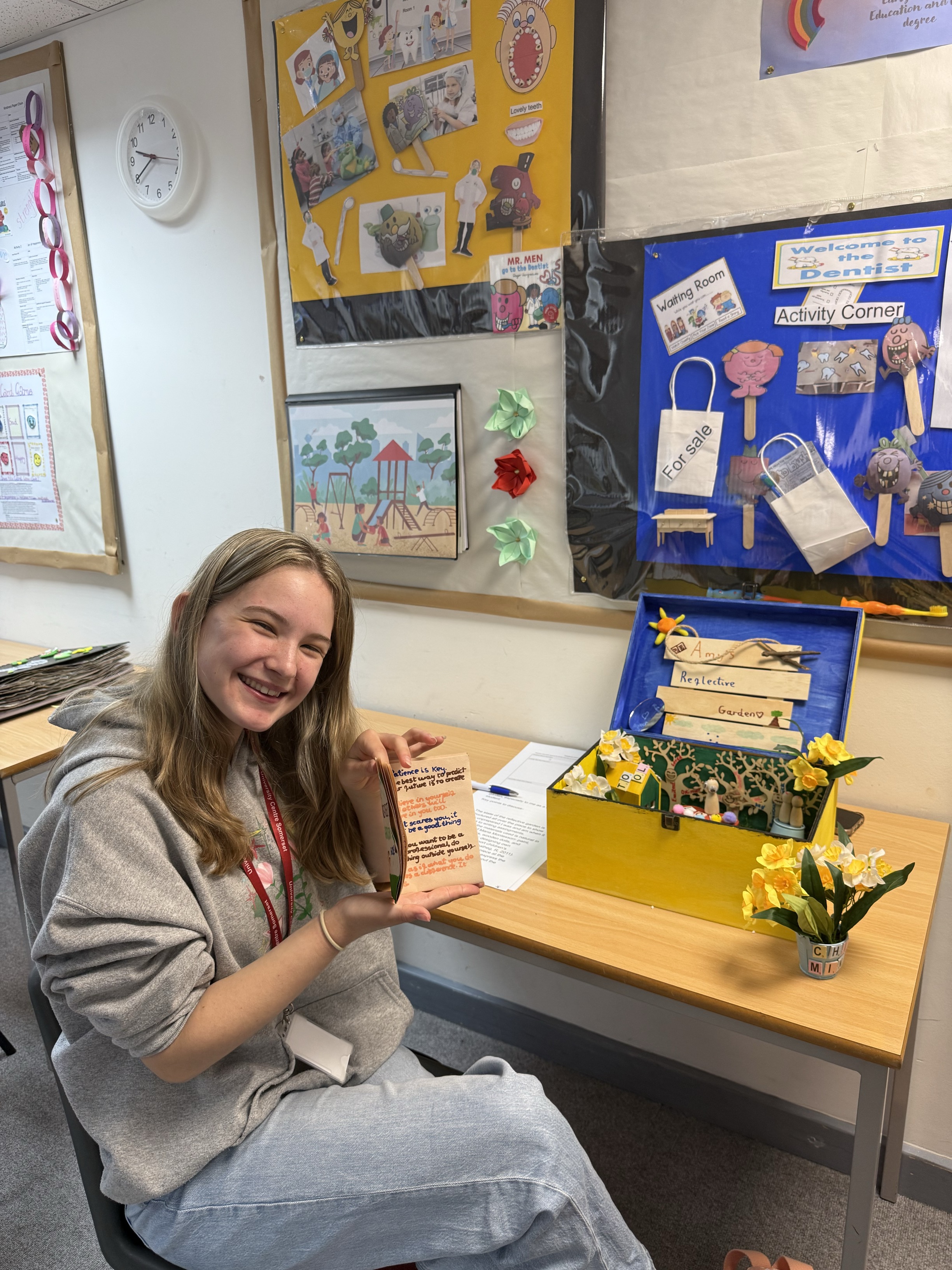
Amy’s reflective garden features all natural materials including sticks, stones, woods and clay which all come together to show her journey at UCS so far. In the garden, there is a pot of daffodils in the middle which reads ‘child minder’ for what Amy wants to grow into and a book of quotes that have helped her along the way.
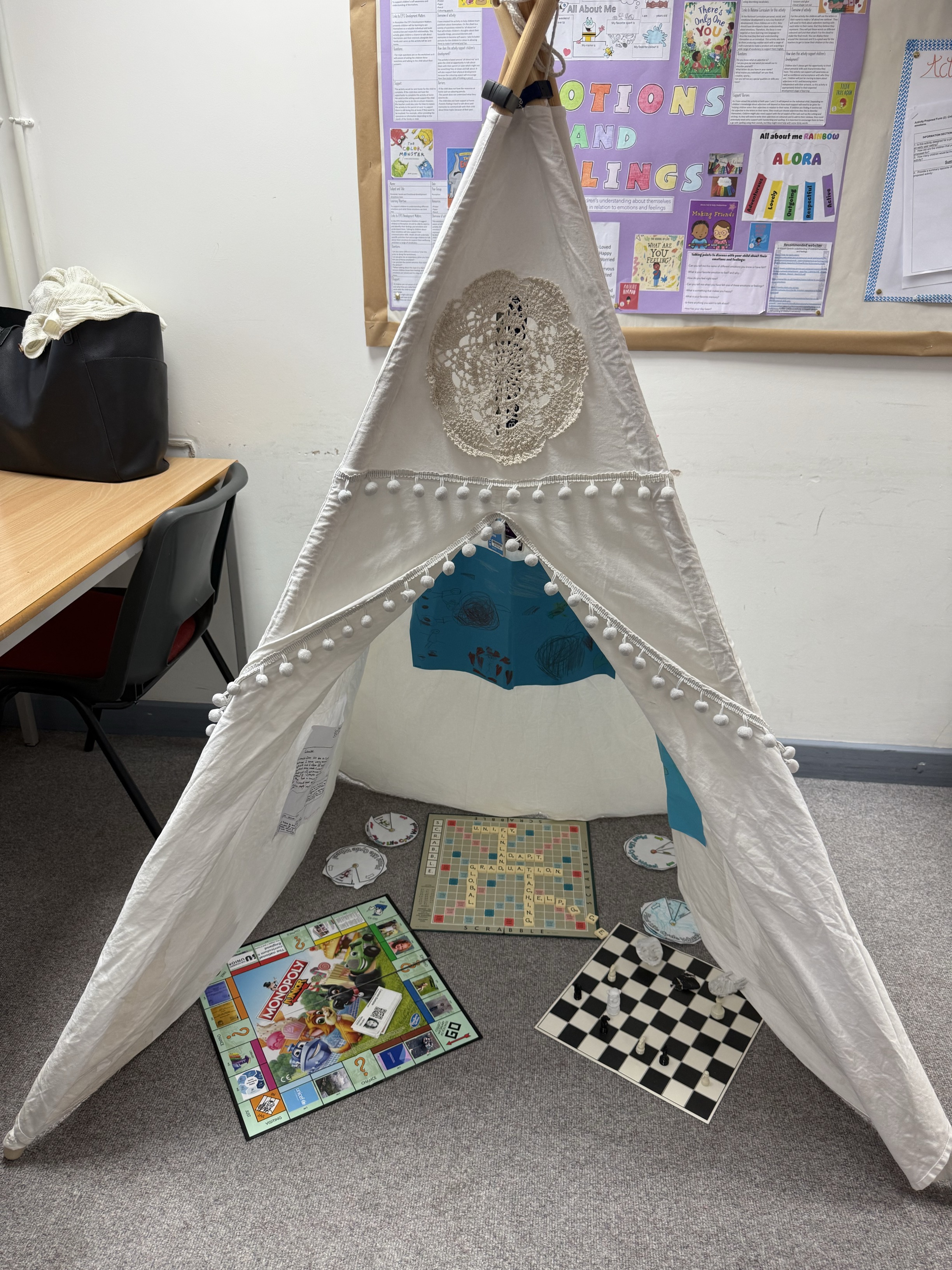
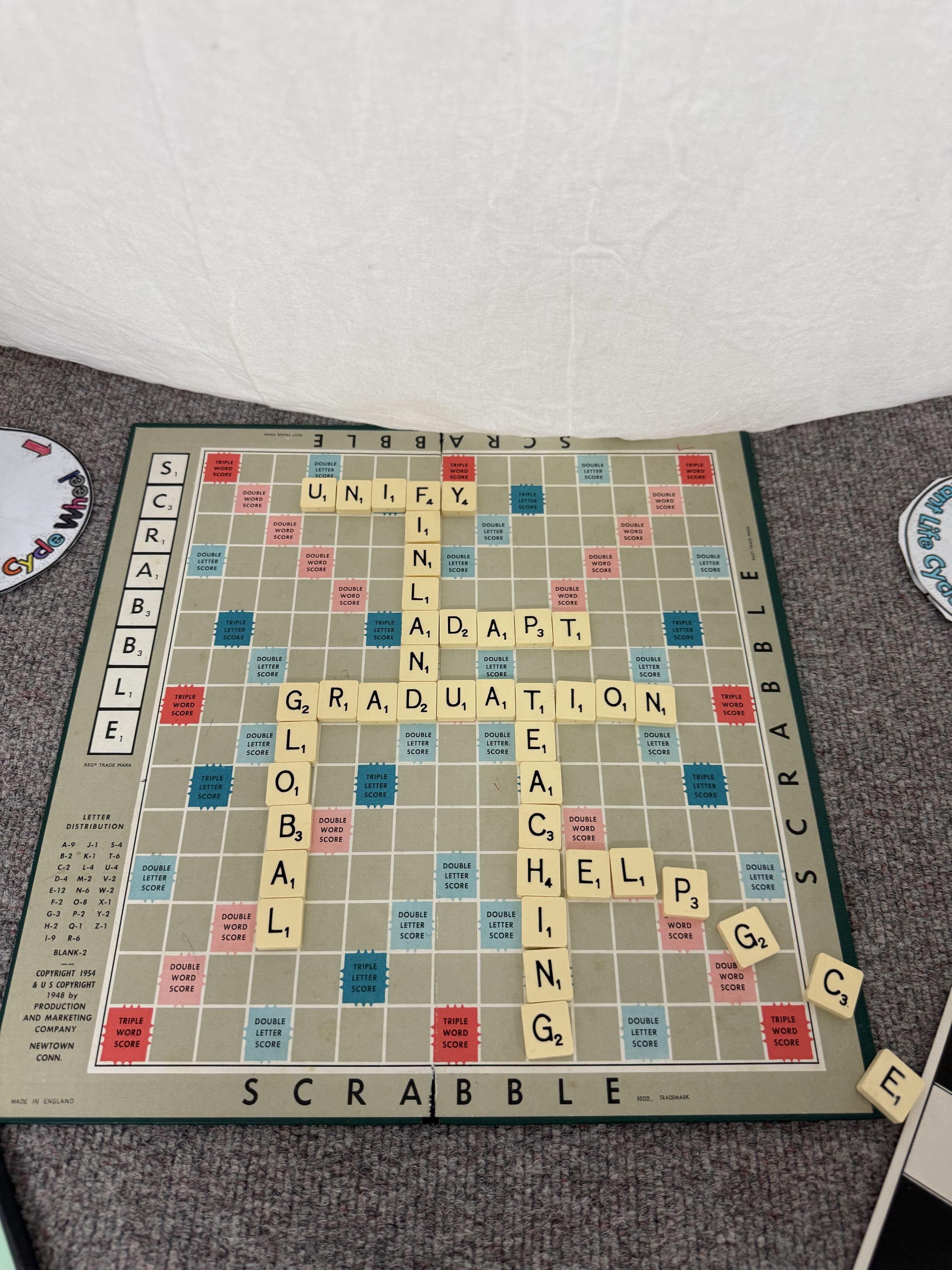
Lauren’s tent features board games, work from when she was a child and drawings from the children she has worked with. Each place on the monopoly board is replaced with things that have impacted her journey; for example, her time working in Finland and The National Curriculum. The chess board shows pieces that represent what Lauren perceives as her weaknesses, including a clock for time management.
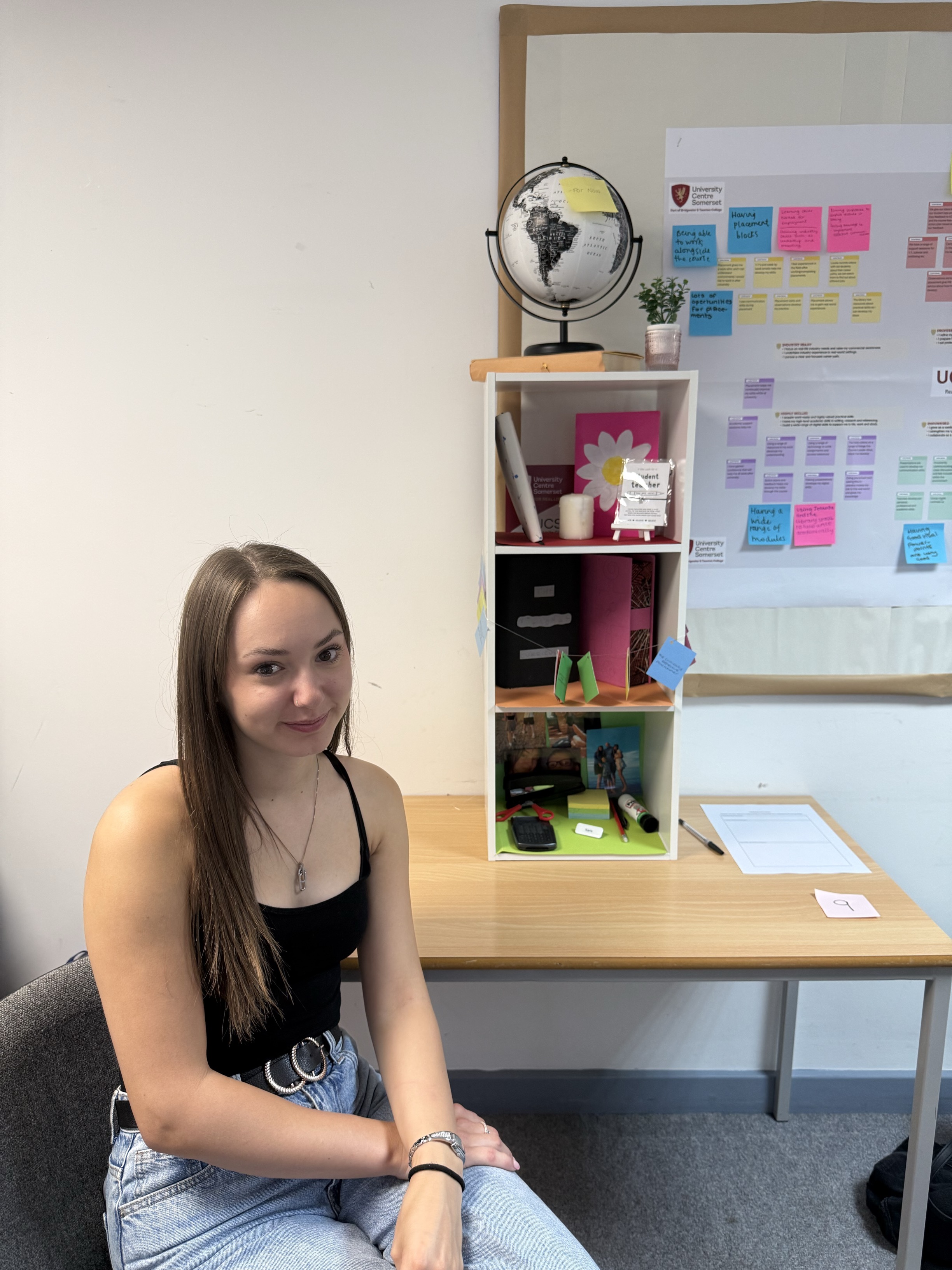
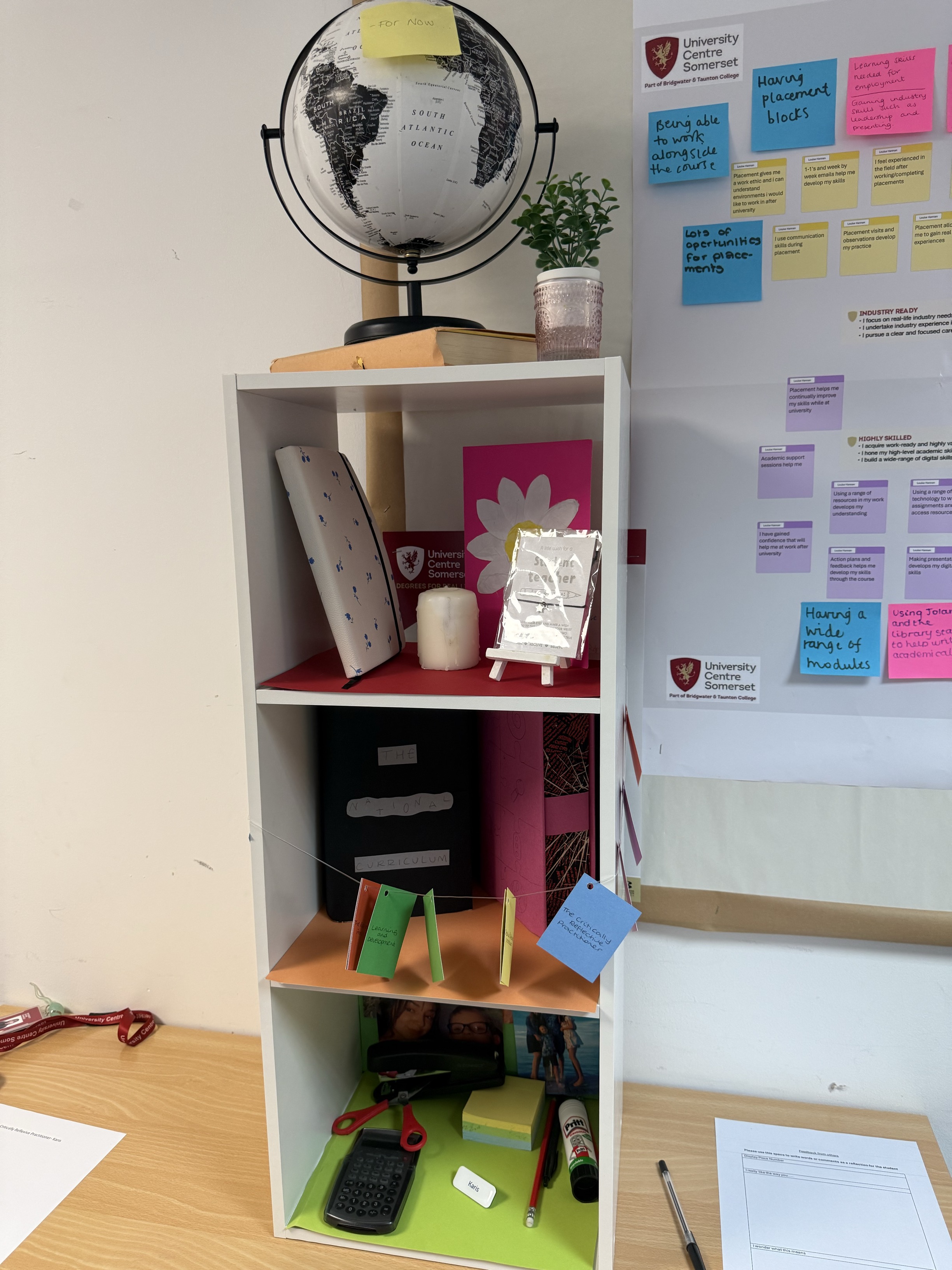
Karis’ model is portrayed with a shelf and shows her journey from the bottom up. The first shelf has stationery to show the tools which she has to succeed, the second shelf shows The National Curriculum and modules of the course, and the third shelf highlights her work placement. The top of the shelf shows a plant (to signify growth), a book (her PGCE) and a globe saying ‘next…’ to suggest that the world is her oyster.
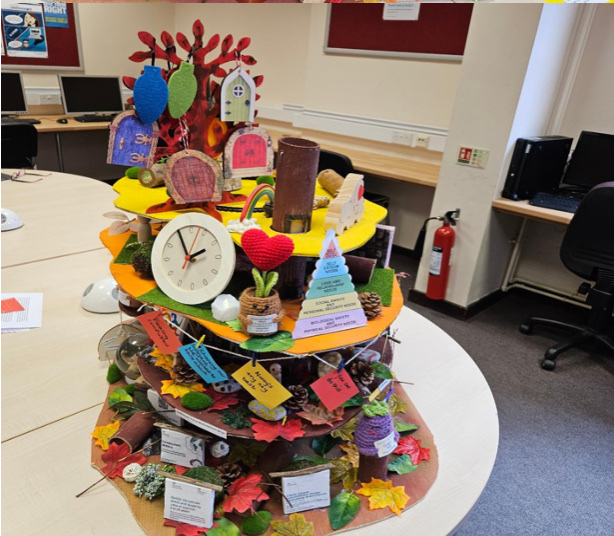
Wendy’s journey is depicted in this layered model, full of ups and downs with the journey of life, study, work and home. The inspiration of the tiered approach is from Bronfenbrenner and the ecological systems theory. The main messages are persistence and determination to continue on your goals despite huge life setbacks and difficulties.
All students have worked extremely hard on their displays, covering some sensitive topics, to really show their reflexive journeys in a brilliantly creative way.
For more information about studying Early Childhood Education and Care at UCS, please see here.